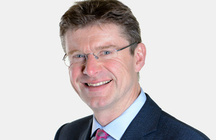Norman Lamont – 1986 Statement on the Royal Air Force
Below is the text of the speech made by Norman Lamont, the then Minister of State for Defence Procurement, in the House of Commons on 26 February 1986.
I am delighted to have the opportunity to open this debate on the Royal Air Force, a service which occupies a key place in British defence policy. Its role in United Kingdom air defence is central not only to this country, but to NATO’s ability to withstand any Warsaw pact attack on western Europe. The crucial place of United Kingdom air forces is illustrated by the fact that the Commander-in-Chief of RAF Strike Command occupies an important senior post in the NATO command structure.
In the central region, too, Royal Air Force Germany plays a vital role in support of our ground forces in the land battle —strike-attack, close air support and reconnaissance. The RAF is also vital for out-of-area commitments. The defence of the Falklands and the airbridge to the islands is only the best known of a range of activities which require men and machines of great diversity and first-rate quality.
Perhaps I could briefly remind the House of the great improvements in Soviet capability which are currently taking place. The Fulcrum agile, all-weather fighter-interceptor is coming into service. It is similar to the F-18, a very advanced and formidable aircraft. The Flanker air superiority fighter, which is similar to the F-15, is also nearing deployment. They are supported, and their effectiveness increased, by the new Soviet airborne early warning aircraft. A cruise missile carrying variant of the Bear bomber is now in production.
This list is by no means exhaustive but it illustrates the considerable improvements in quality which the Soviet forces are steadily achieving. These improvements are to forces which substantially outnumber those of the NATO Alliance. The Warsaw pact deploys some 2,700 fixed wing tactical aircraft on the central front to NATO’s 1,300. The Warsaw pact production rate of aircraft is at a ratio of 1·4:1 against that of NATO. Against that background it has been this Government’s policy to carry through a major re-equipment programme for the RAF, making it one of the most sophisticated air forces in NATO.
The RAF share of the defence equipment budget is some 36 per cent, in the current year. That is a share of a defence equipment budget which has grown from 39 to 46 per cent. of the entire defence budget since 1979. That defence budget is about one fifth larger in real terms than when we entered office.
These figures are the measure of the extra resources that we have been able to devote to the re-equipment of the RAF. It is a capital-intensive service and takes a large part of the equipment budget, and for that reason the majority of my speech will be about equipment.
By any standards, a major milestone in the continued progress of this re-equipment programme occurred last year when the national armament directors of the United Kingdom, Germany, Italy and Spain signed the Turin agreement to proceed collaboratively with the new European fighter aircraft.
Following on from the success of Tornado, EFA was in fact the logical next step in terms of European collaboration. The United Kingdom will need a new agile combat aircraft to replace its Phantom and Jaguar aircraft from the mid-1990s. Other European countries have a similar need in the same timescale. It is one thing to perceive a need and an opportunity, another to turn that into a collaborative programme. By his initiative and energy my right hon. Friend the Member for Henley (Mr. Heseltine) gave impetus to this project and, despite great difficulty in reaching a consensus on requirements, secured its launch: a tremendous political achievement.
Work on the project is proceeding well. The industries of the four countries started on the project definition stage last September shortly after the national armament directors reached agreement on the technical and organisational basis of the project definition study. One of the major technical characteristics relates to aircraft weight, about which there has recently been considerable press comment. I confirm that it has always been, and remains, our firm intention that aircraft design shall respect the characteristics which were agreed last summer in Turin. I welcome this opportunity to make that position clear.
It would be wrong to imply that the task that has been set for EFA is easy. The definition and design of such an aircraft, incorporating state-of-the-art technology, is inevitably a challenging process. There is clearly much to be done during the coming months before the industrial reports are submitted to the four Governments for appraisal later this year. But we are fortunate to have the firm technical foundation of the Tornado partnership to work on. Moreover, we have the political and industrial resolve to follow up the success of that programme with an even more ambitious and exciting one.

